Transform Your Windows: The Ultimate Guide to Choosing Blinds and Shades
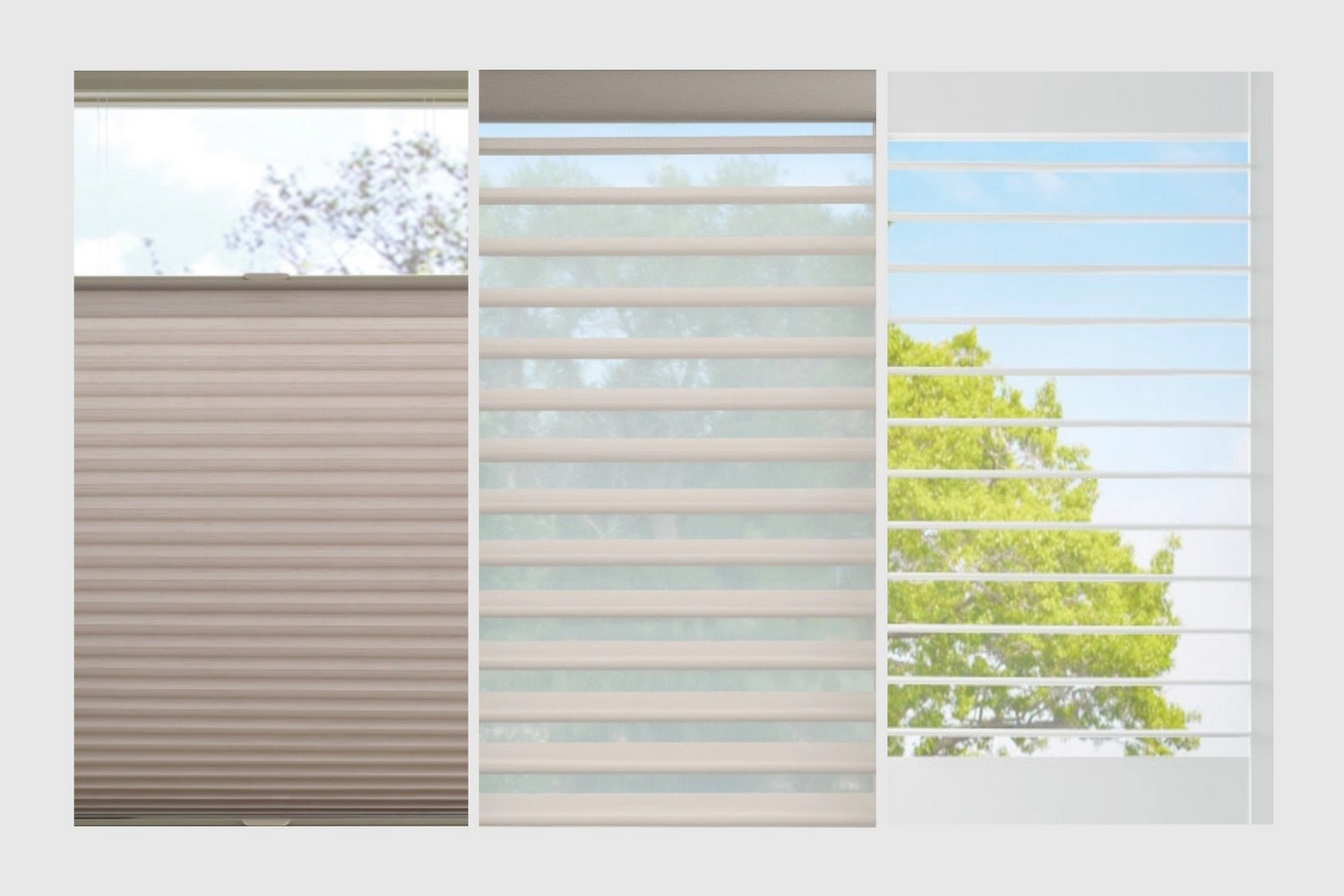
Written By Armi Avila
Choosing the ideal blinds and shades for your home can be a challenge given the variety of options available. From enhancing privacy, controlling light, or adding a touch of style, the right window treatments can make a significant difference.
Here's a comprehensive guide and considerations to help you choose the ideal blinds and shades for your windows in every room of your home.
Understand Your Needs
Before diving into the various types of blinds and shades, it's essential to consider your specific needs and identify your priorities:
- Privacy: How much privacy do you need in each room?
- Light Control: Do you want to block, filter, or diffuse the light?
- Style: What aesthetic are you aiming for?
- Temperature Control: What is your desired temperature for optimal comfort?
- Cost: How much are you willing to invest?
Available Opacities
- Sheer: Allows most light to come through with little to no privacy. Offers limited insulation. This opacity is perfect for view rooms with no need for privacy.
- Semi-Sheer: A step up from sheer in terms of privacy and insulation. Allows a significant amount of light while providing some ability to obscure views.
- Light Filtering: Otherwise known as semi-opaque, provides a good amount of light control and privacy. Ideal choice to achieve privacy and letting light come into the room.
- Room Darkening: Also called opaque or black-out. Designed to block most light, providing privacy, and glare control. This opacity is perfect for bedrooms and media rooms.
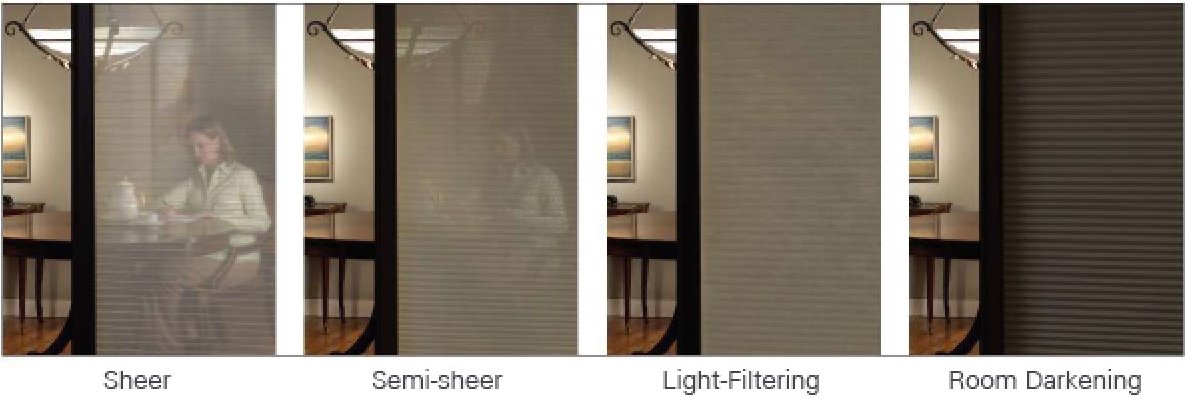
Style and Aesthetic Considerations
- Color and Material: Options range from coordinating the color and material of your blinds or shades to your interiors or creating a contrast. While strong colors can create a bold statement, neutral tones are more versatile and considered a safer option.
- Layering and Combining: Combine different styles for added depth and functionality.
- Custom Solutions: Custom-made window treatments tailored to address specific needs.
- Safety: Consider cordless or motorized shades especially for homes with kids and pets.
- Convenience: For ultimate control, consider smart shades that integrate with home automation systems and allow for voice or app control.
Types of Blinds and Shades
Let's explore the most popular types of blinds and shades, along with their pros and cons:
- Description: Single fabric panel that rolls up or down.
- Style: Modern and sleek.
- Pros: Simple, clean look; available in various colors, textures, fabrics, and opacity; easy to operate; more cost effective.
- Cons: One directional; less effective at insulating; not as optimal for room darkening due to wider gaps on the sides resulting in more light seepage.
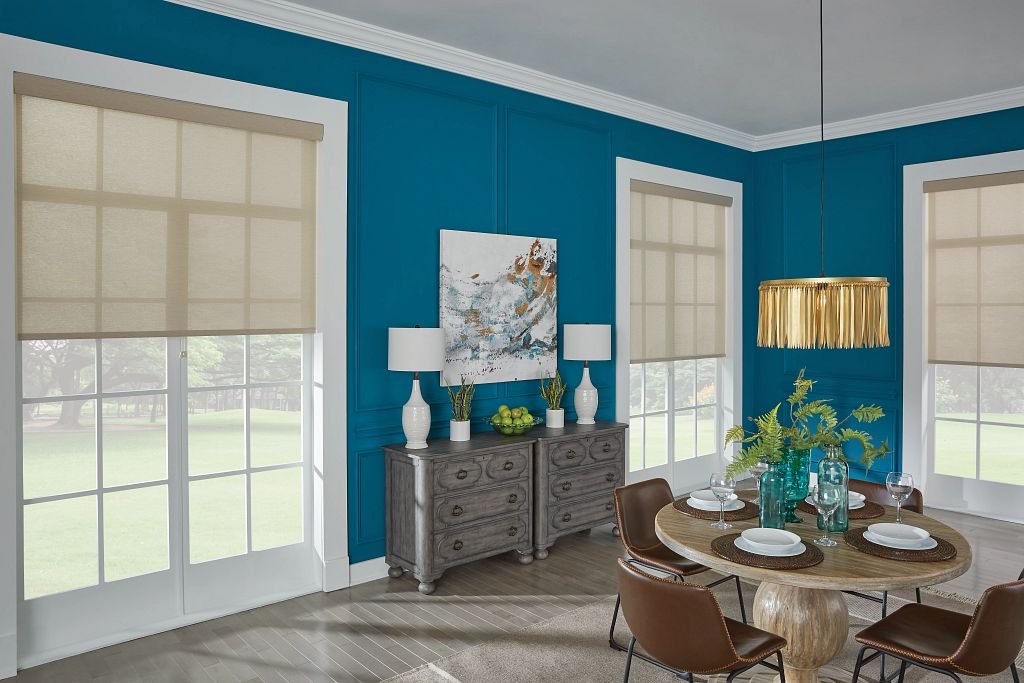
Graber Roller Shades
2. Roman Shades
- Description: Fabric shades that gather into neat, horizontal stacks when raised.
- Style: Formal and classic.
- Pros: Elegant and stylish; available in numerous fabrics and patterns; good for insulation; adds softness to the space; available in top-down/bottom-up.
- Cons: Can be bulky when raised; poses size limitations; more premium.
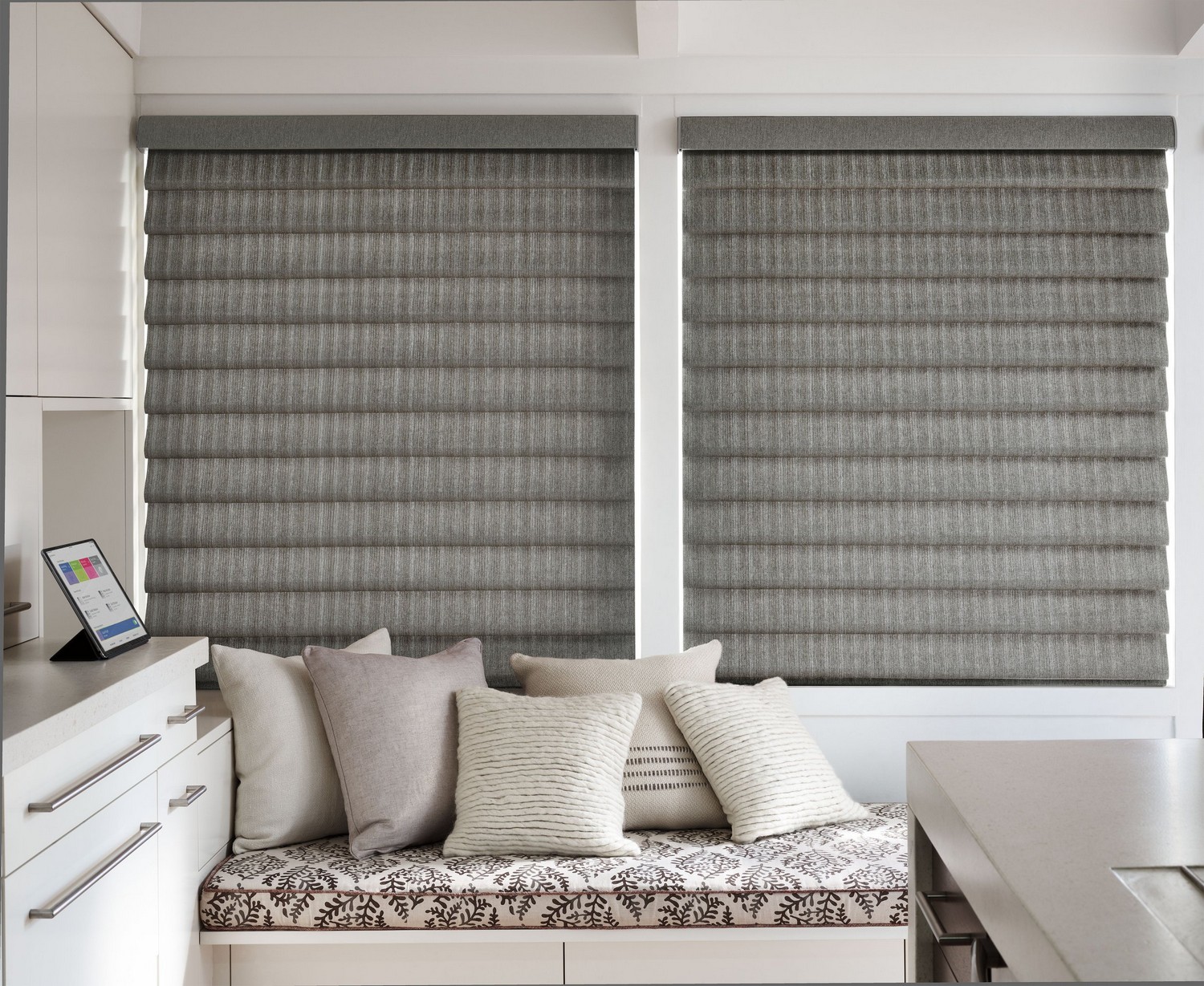
Hunter Douglas Vignette® Modern Roman Shades
- Description: Horizontal slats, usually made of wood, faux wood, or metal that can be titled to control light and privacy.
- Style: Traditional and classic.
- Pros: Excellent light control; durable; available in various materials and finishes.
- Cons: Can be challenging to clean; heavier to raise up and down.
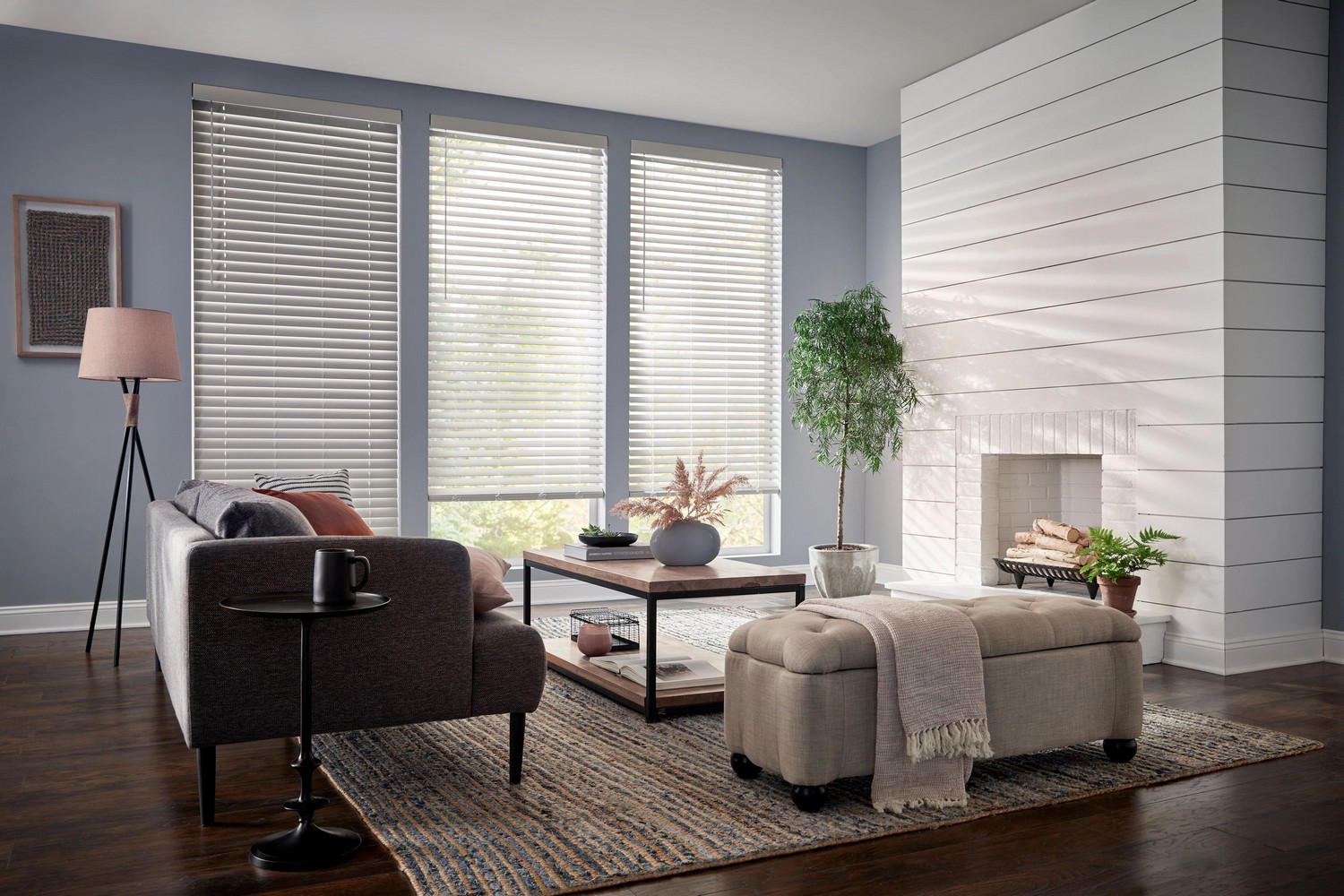
Alta Window Fashions Faux Wood Blinds
- Description: Also called Honeycomb Shades, has a honeycomb-shaped construction that trap air for insulation.
- Style: Contemporary.
- Pros: Excellent energy efficiency; available in various opacities; good sound absorption; available in top-down/bottom-up; available in different applications; great for room darkening; minimal profile.
- Cons: More premium, limited view.
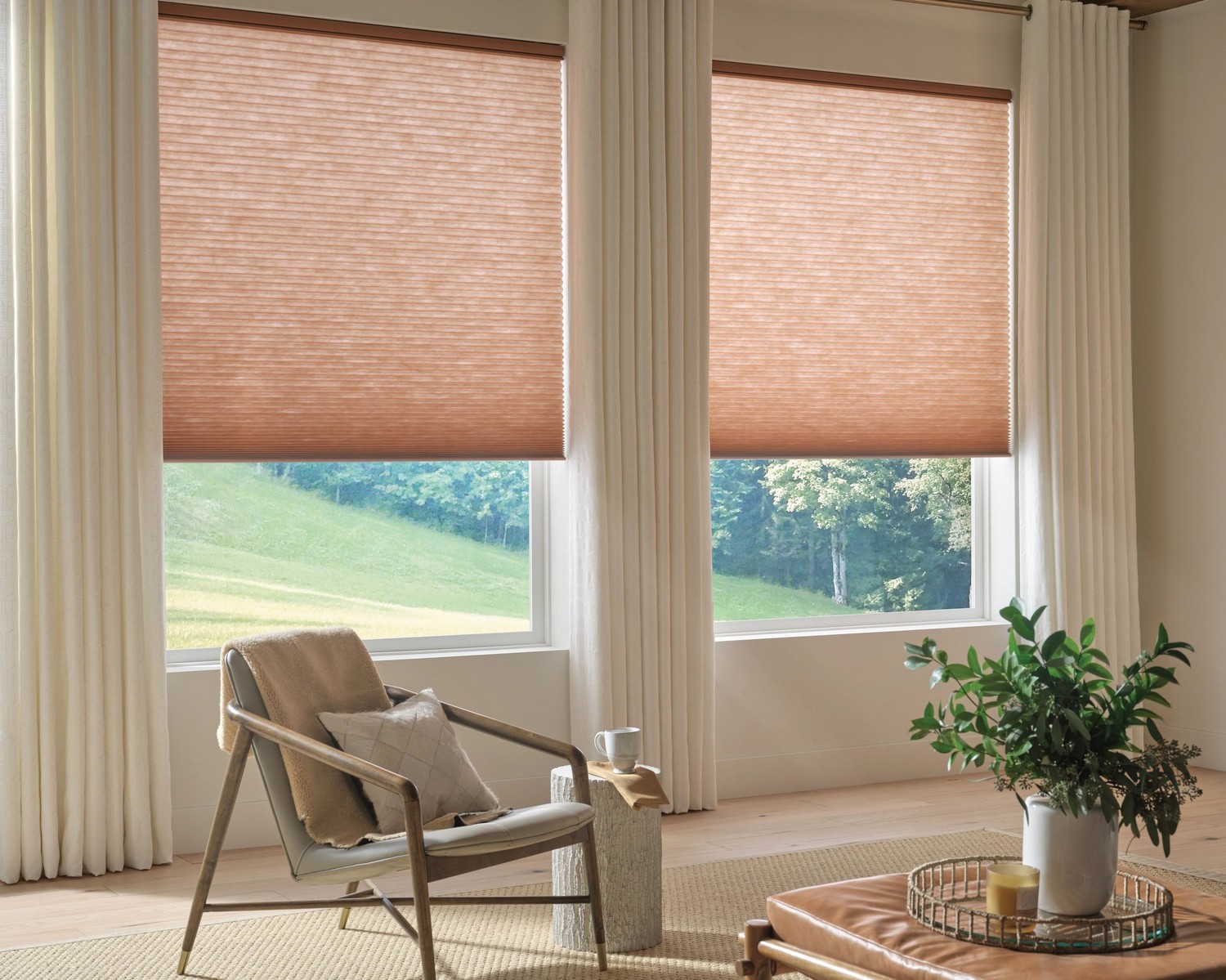
Hunter Douglas Applause® Honeycomb Shades
5. Sheer Shades
- Description: Fabric shades with vanes that tilt, combining sheer and either light filtering or dimming fabric.
- Style: Elegant and stylish.
- Pros: Softens natural light; provides privacy and UV protection while maintaining view; stylish; offers superior viewing flexibility; has the same tilt function as blinds yet easier to raise up and down.
- Cons: More premium and considered a major investment.
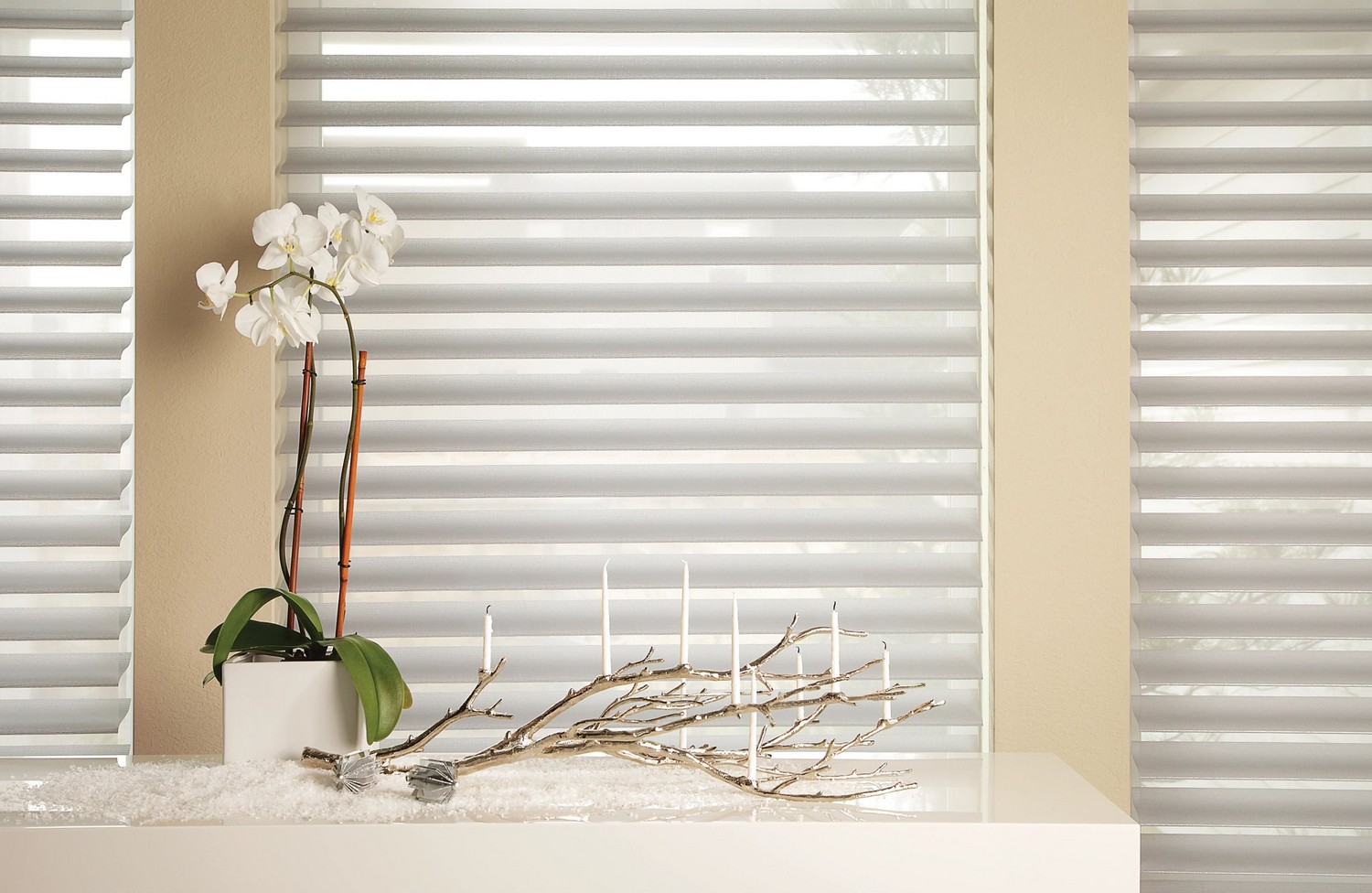
Hunter Douglas Silhouette® Sheer Shades
6. Woven Shades
- Description: Made from natural materials like bamboo, woven wood, reeds, or grasses.
- Style: Natural and rustic.
- Pros: Adds texture and natural aesthetic into the room.
- Cons: Bulky when raised; more fragile; harder to clean.
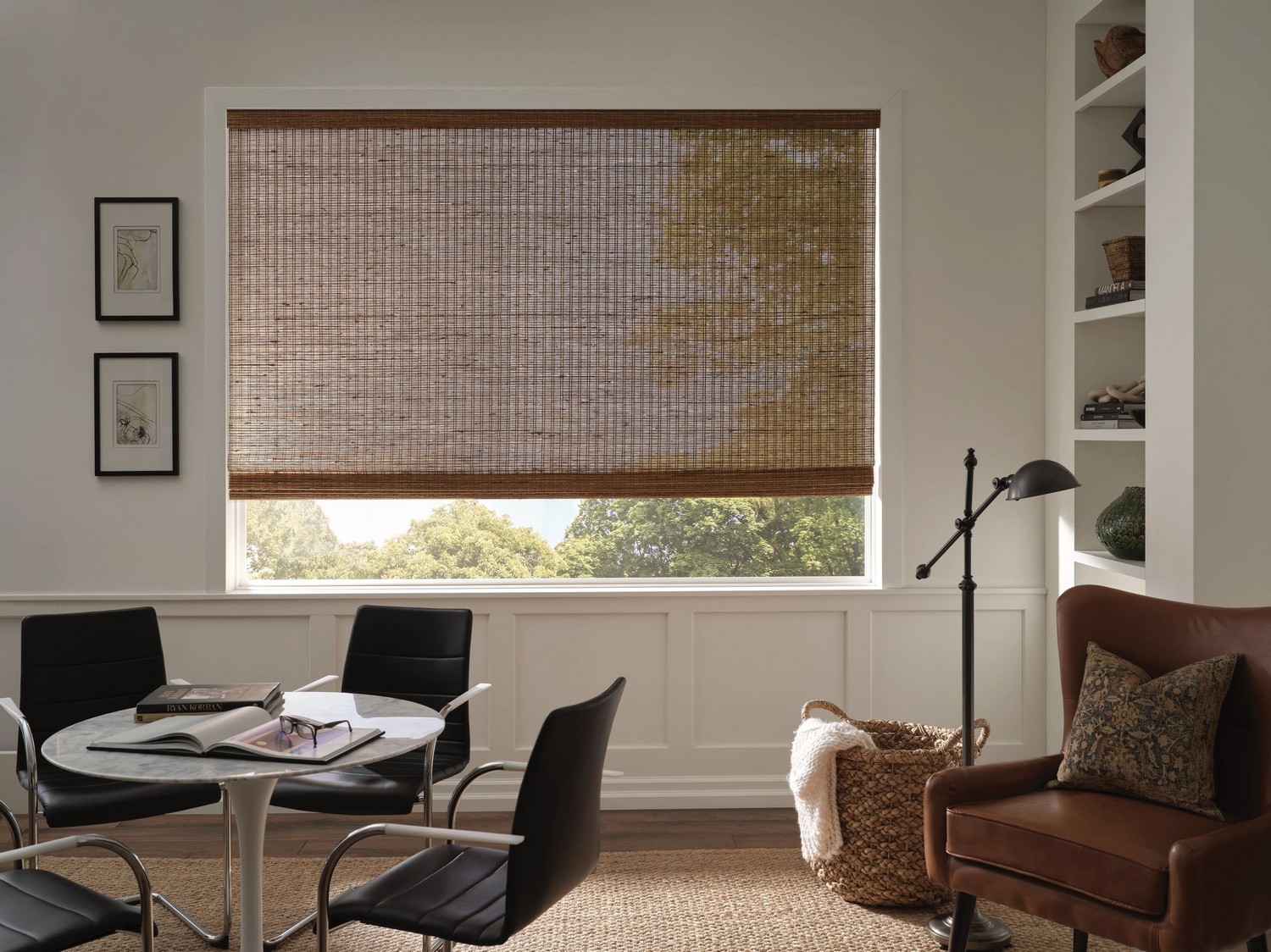
Hunter Douglas Provenance® Woven Wood Shades
7. Shutters
- Description: Consists of panels with louvers that can be tilted.
- Style: Coastal, classic, and timeless.
- Pros: Very durable; offers excellent light control and privacy; easy to clean.
-
Cons: Considered a major investment; may appear bulky to some.
- Description: Also called Zebra or Banded Shades, consist of a single panel of fabric with uniform alternating horizontal stripes.
- Style: Modern.
- Pros: Allows view through or complete privacy, can be adjusted even when partially raised.
- Cons: Striped pattern may not be for everyone.
- Description: Automated window treatments.
- Style: Depends on the shade; adds a touch of tech-savvy experience.
- Pros: Convenience; ease of use.
- Cons: Considered a major investment.
- Typical Needs: Privacy, light control, adding style to the space.
- Considerations: A place to entertain, so you may want to invest in more premium styles. Balance between light control and aesthetics. Consider motorized options for convenience.
- Best Options: Roman Shades, Roller Shades, Sheer Shades, Shutters, Motorized Shades.
- Typical Needs: Privacy, light control.
- Considerations: Durability and cleaning; ease of use.
- Best Options: Roman Shades, Roller Shades, Sheer Shades, Shutters, Motorized Shades.
- Typical Needs: Darken the room for sleeping, insulation, privacy.
- Considerations: Child safety, better sleep, sound absorption, convenience.
- Best Options: Cellular Shades, Roman Shades, Motorized Shades.
- Typical Needs: Privacy, sun control, easy to clean.
- Considerations: Cleanability; moisture-resistance for humid environments; easy to operate.
- Best Options: Roller Shades, Faux Wood Blinds, Motorized Shades.
- Typical Needs: Allowing light while maintaining privacy.
- Considerations: Moisture resistance; prioritize privacy and durability.
- Best Options: Top-down/bottom-up Cellular Shades, Roller Shades, Shutters.
- Typical Needs: Block light, insulation, glare control.
- Considerations: Optimal viewing experience, insulation.
- Best Options: Cellular Shades, Roller Shades.
- Typical Needs: Glare control, security, convenience.
- Considerations: Control over natural light to create a comfortable workspace, ease of use.
- Best Options: Wood Blinds, Shutters, Roller Shades, Top-down/bottom-up Cellular Shades, Motorized Shades.
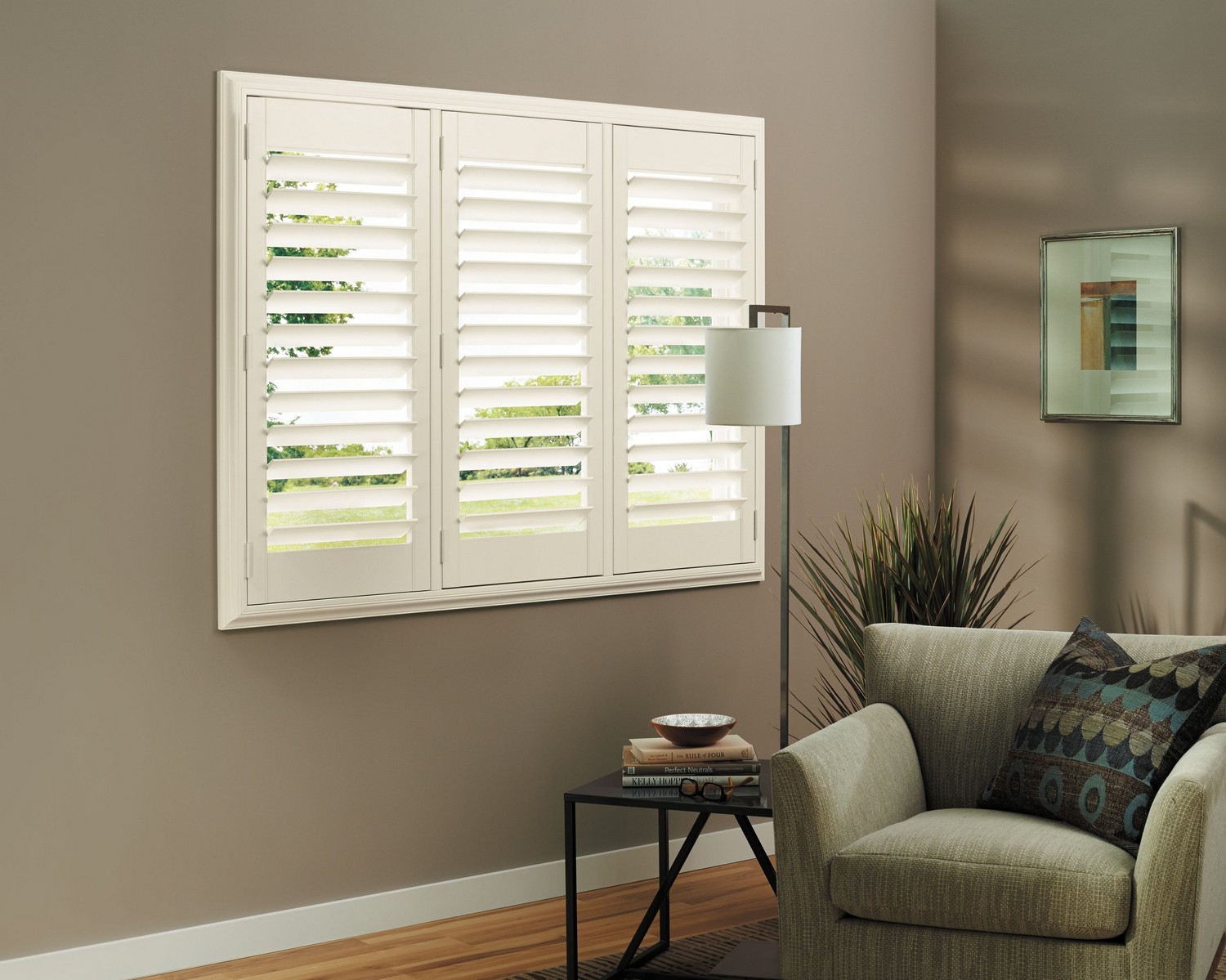
Hunter Douglas Heritance® hardwood shutters
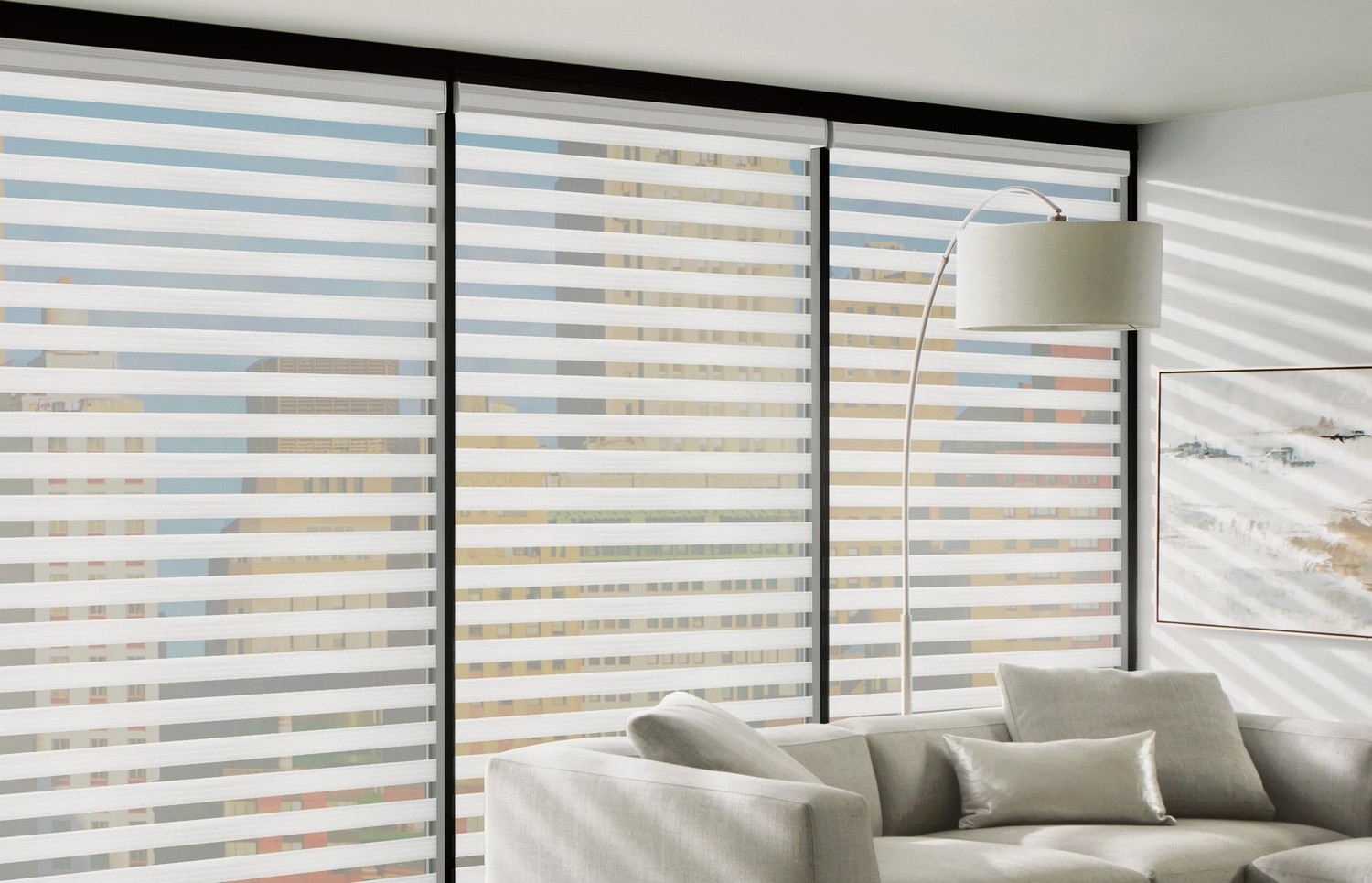
Hunter Douglas Designer Banded Shades
9. Smart Shades
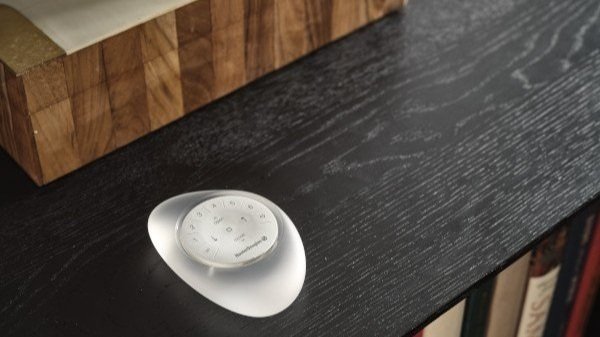
Room-by-Room Guide
Living Room
Dining Room
Bedroom
Kitchen
Bathroom
Media Room
Office
Conclusion
Choosing the right blinds and shades for your home involves balancing functionality and style. By understanding your specific needs and exploring the various options available, you can find the perfect window treatments to enhance your living space. Whether you're aiming for energy efficiency, privacy, or a stylish update, the right blinds and shades can make all the difference.
Unleash your inner designer and get ready to transform your windows! Ready to start? We are here to help! If you live in the Greater Seattle or Bellevue and the eastside, please feel free to give us a call at 206-801-6010 or fill out our online form. Happy decorating!
Transform Your Home For Your Custom Window Coverings Needs In Seattle & Bellevue